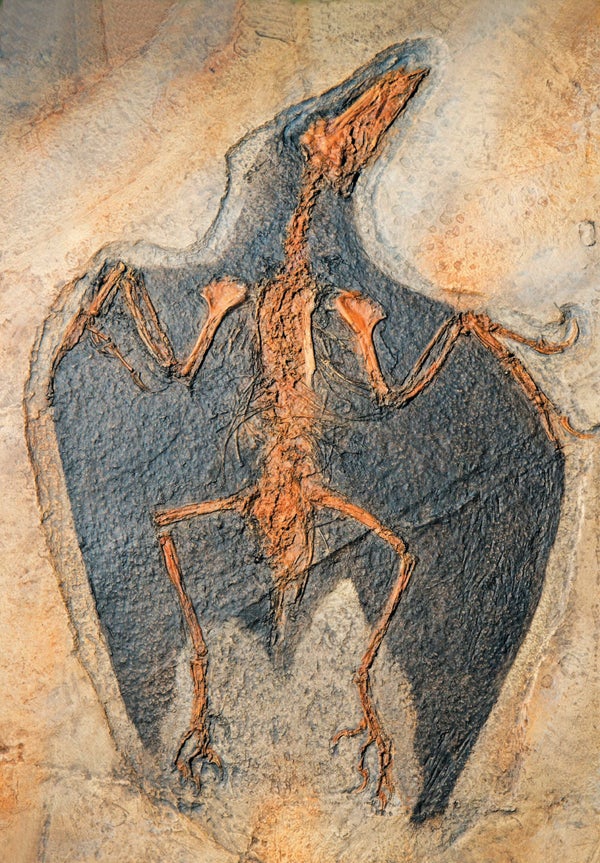The prehistoric animal kingdom was a riot of colors, from iridescent-feathered dinosaurs to jet-black ink excreted by Jurassic squid relatives. Like modern-day animals, ancient species' hues helped them communicate, camouflage and even regulate body temperature. But reconstructing these colors today is a challenge because compounds and structures that color animals' skin, fur and feathers usually degrade or change during fossilization. Experts have developed methods to reliably detect structures and pigments related to dark colors like the black and brown of feathered dinosaurs, but other shades (like the yellow and reddish-orange made by pigments called pheomelanins) have been especially hard to pin down.
Now a team of scientists has filled in that missing chunk of the prehistoric palette by developing the first reliable test to detect these gingery colors in fossils. “Pheomelanin is clearly an elusive pigment, and these findings will absolutely help us to detect evidence of ginger pigments in other fossils,” says the study's lead author Tiffany Slater, a paleobiologist at University College Cork in Ireland. The results were recently published in Nature Communications.
Slater and her colleagues went looking for ginger shades in the fossil record because evidence of pheomelanins has shown up there far less often than the researchers expected, compared with modern-day animals. And the previously reported evidence was largely inconclusive. Scientists who interpreted a reddish color for the armored dinosaur Borealopelta, for example, couldn't distinguish whether the pheomelanin they found came from the original pigment or from contamination after the dinosaur's death.
On supporting science journalism
If you're enjoying this article, consider supporting our award-winning journalism by subscribing. By purchasing a subscription you are helping to ensure the future of impactful stories about the discoveries and ideas shaping our world today.
So Slater and her co-authors created a test to distinguish between true chemical traces of ginger colors and those introduced by nonbiological sources. They heated various modern-day bird feathers in an oven to mimic the breakdown of biological compounds during the fossilization process. By inspecting the heated feathers under a microscope and using a chemical assay to identify different types of melanin, the team found that biological pigments do leave a distinct and identifiable signature in fossils. The researchers then checked various fossils for the chemical markers of the pigment and found them in a 10-million-year-old frog, the Cretaceous bird Confuciusornis and the dinosaur Sinornithosaurus.
The new analysis technique offers a “more accurate determination” of the colors of fossilized animals, says Liliana D'Alba, an evolutionary biologist at the Naturalis Biodiversity Center in the Netherlands, who was not involved in the new study. For example, flying pterosaurs are presumed to have been brightly colored but have not been examined in detail.
Further research might even reveal how ginger hues evolved in the first place. “Scientists still don't know how, or why, pheomelanin evolved,” Slater says, especially because its production can cause cancer in an animal's tissues. “The fossil record might just unlock the mystery.”
